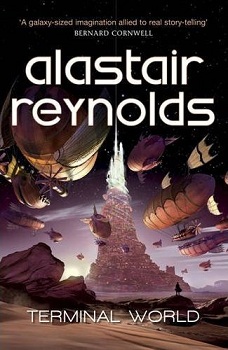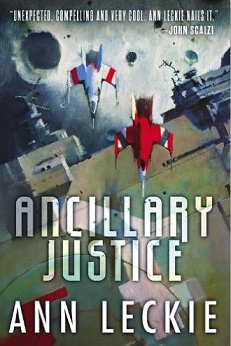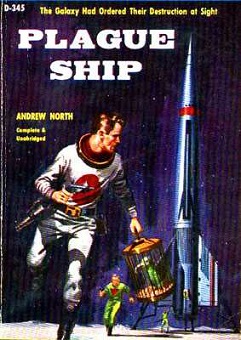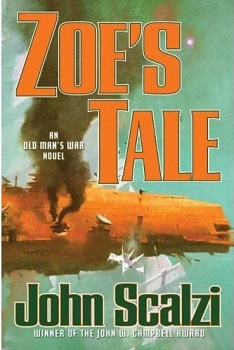
Terminal World
Alastair Reynolds
487 pages
published in 2010
I find Alastair Reynolds hard to review. I like his work well enough to keep reading his novels, but I find it hard to say anything useful about them. As a writer, he has his feet planted firmly in the hard science fiction camp, where “hard” means no FTL ships or time travel and only the right sort of technobabble and jargon. He is however, unlike far too many American hard sf writers, not blind to literary virtues and not half bad at creating plausible, lived in futures either. All in all, most of his novels are solid, core science fiction, where if you like that sort of thing you’ll like them, but perhaps with not much to talk about other than the plot or the setting. They’re evolutionary, rather than revolutionary novels.
Terminal World is a case in point. This is a standalone adventure story set in the far future, where the world as we know it has changed considerably. It’s slowly dying, with what remains of humanity clustered on and around a gigantic artificial spire called Spearpoint, which from top to bottom is divided into zones of ever decreasing technology: Circuit City, Neon Heights, Steamtown, etc. Transfering from one zone to another is not easy: people who do it suffer from zone sickness, while higher technology stops working in a lower tech zone. Away from Spearpoint the world is largely wilderness, with the various zones becoming much larger as they spread out from the spire. What we have here in fact, is the planetary equivalent of Vernor Vinge’s Zones of Thoughts he divided the galaxy in, in A Fire Upon the Deep and sequels. It’s a great setting, with a never quite revealed secret at the heart of it observant readers might puzzle out for themselves.
And yet, the story that’s told in it is somewhat pedestrian. It starts with Quillon, an angel from Circuit City, the highest and most advanced part of Spearpoint, who’s a political refugee now living in Neon Heights. Where the first is roughly post-singular, the second is of a nineteenfifties technology level. When assassins from his former home turn up to hunt him down for the secrets in his head, secrets he himself is unaware of, he has to move down and out of Spearpoint, into the great unknown.
Once out of Spearpoint, Terminal World suffers from a common problem with fantasy novels, in that the story has to feature all the dangers and locations Quillon is told about before leaving town. For large parts of this Quillon is largely a passive observer, whom the plot happens to as it moves from set piece to set piece.
What saves the book are those set pieces. There is for example the Swarm, a steampunkish fleet of dirigibles, zeppelins and heavier than air aircraft forming their own, 24/7 airborne community, having evolved out of Spearpoint’s air force, long forgotten in the city itself. There are the self assembling, vampiric cyborgs which are the greatest threat in the wilderness and especially, there’s one scene at the end of the book that redeems it all by itself.
Because the zones are shifting, the Swarm and Quillon manage to move into a territory that for thousands of years was on a far too low a technological level for even normal humans to exist. Deep in the heart of it the Swarm comes across a huge graveyard of rockets and planes, of an increasingly primitive nature as they moved deeper into it, the end result of hundreds, perhaps thousands of years of failed escape attempts by the inhabitants of a now dead, twin city to Spearpoint. It’s a chilling, awe inspiring scene, but it’s only one scene and it has no further bearing on the plot.
It may perhaps be what Reynolds is doing, while the plot goes on its steady way, is play a game with the reader. A game in which the true nature of the world is never quite revealed, but hints are given. A dying desert world of which the atmosphere is slowly leaking into space as its inhabitants likewise are slowly losing their technology, their marvelous city dependent on the most basic of resources gathered from the countryside, resources also slowly drying up. It’s a world of barbarians taking over without understanding the high technology of their ancestors, a world indeed with two moons in the sky.
Now which world does that remind you of?



